

From their various points of view, eight China Daily journalists share feelings, insights and observations about Thursday's events in Beijing marking the end of World War II.
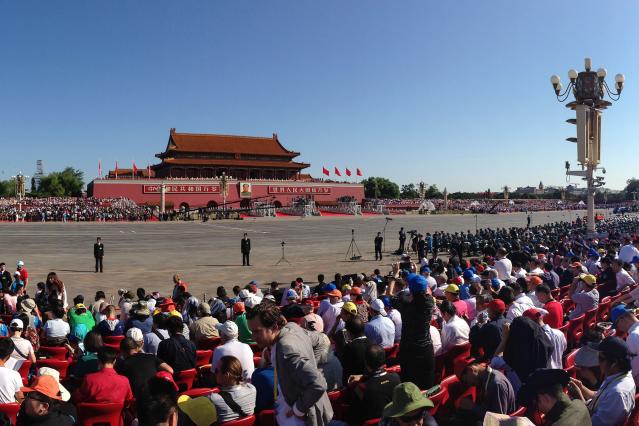
XU JINGXING/CHINA DAILY
Thank you for giving us our todays
Ravi Shankar
EXECUTIVE EDITOR OF CHINA DAILY OVERSEAS EDITIONS
I am a nocturnal person. Years of working in newspapers that are published past midnight mean I rarely go to bed till well past that time.
So my delight was mixed with some trepidation when I had the privilege of being invited to the Sept 3 parade. The schedule went against my body clock. Wake-up call at 4 am, breakfast at 5 am, board bus to Tian'anmen Square at 6 am and be seated by 8 am after security checks.
But there are days when waking up early is more than worth it.
Pomp and pageantry. Sound and spectacle. What were cliches till Thursday turned into a spectacular live show from my vantage point bang opposite the Tian'anmen Rostrum.
Those magnificent young men in planes and tanks or marching in perfect step-including about 1,000 foreign troops from 17 countries-held us in thrall for two hours.
The veterans, living, breathing heroes, most of whom saw comrades fall in war, received the biggest applause when they led the march.
Yes, this was a celebration-but also a somber moment of reflection.
Yes, there were murmurs of political motives behind the parade in some quarters-the event has not been celebrated in China on such a scale-but the victims deserve the remembrance and gratitude; the veterans their day under an early-autumn sun.
In the run-up to the parade, I picked up where I left off with Rana Mitter's Forgotten Ally: China's War with Japan, 1937-1945, described as "the epic, untold story of China's devastating eight-year war of resistance against Japan".
If there was any doubt outside China about the tremendous sacrifices made, they would be dispelled by the book.
During the campaign in the Burma Theater in 1944, the Japanese were held off for the first time in the northeastern Indian state of Nagaland-the fierce battles are reported to have taken many lives on both sides.
At the war cemetery in the state capital Kohima lies an epitaph to the mostly British and Indian soldiers:
When you go home,
Tell them of us and say.
For your tomorrow,
We gave our today.
On Thursday, I fully understood what it means and why the commemoration was needed.
The writer, a winner of the China Friendship Award, was among 50 invited to the parade by the State Administration of Foreign Experts Affairs.
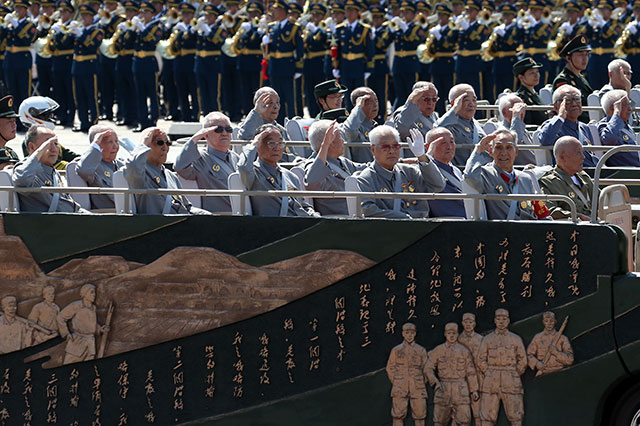
veterans
Elderly veterans earned praise
Wu Jiao
REPORTER
When I left home at midnight for the victory parade, my WeChat was already flooded with various discussions of the event posted by friends and relatives.
Some mentioned their family's suffering and heartbreak during the Chinese People's War of Resistance against Japanese Aggression (1937-45). Others said they would watch the live broadcast with their children to teach them about history.
Many people outside China are under the impression that China intended to show its muscle by hosting, for the first time, a victory parade. For most of us here, it is more a kind of moment for us to review a history lesson, to remember those who paid the highest price for the peace we have now and to discuss what we should do later to make the country safer through retrospection.
My grandmother, in her 80s, recalled how her family fled into the forests in panic whenever the Japanese troops arrived at the village she lived in.
My 5-year-old daughter asked why some Japanese people wanted to invade China, which seemed so contradictory to the impressions she had from viewing the adorable characters in Japanese cartoons.
A Westerner on my team in the newspaper was interested in what staff at the Japanese embassy would be doing, as none of them attended the parade.
The extent of the sacrifices made by Chinese fighting and tying down the Japanese Imperial Army was little appreciated or even known about in the West, he said.
For me, a professional in her 30s, the most impressive part of the events marking the anniversary is that no matter how much we learned of the war from textbooks, it was only when we looked into the weather-beaten faces of the surviving soldiers and listened to their stories that we really understood what that period of history means for the nation.
When the vehicles carrying these veterans, with an average age of 90, passed by, spectators stood up and applauded them. This was not about flexing muscles. It was about saying thank you and expressing a deep sense of gratitude.
When the parade ended near noon, I could sense the hearts of many in the audience were touched by what they had seen.
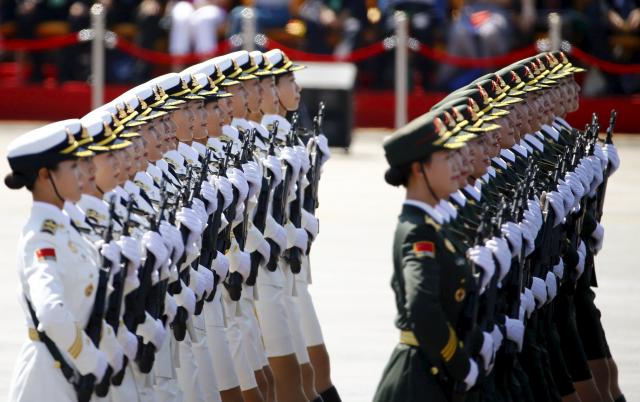
Female soldiers of China's People's Liberation Army (PLA) march during the military parade to mark the 70th anniversary of the end of World War Two, in Beijing, China, September 3, 2015. [Photo/Agencies]
Female soldiers march proudly
Zou Hong
PHOTOGRAPHER
"Chest out! Belly in! Look ahead!"
Under a scorching sun in late summer in Beijing, hundreds of female soldiers in formation replied to their instructor's orders with neat and accurate movements. When the formation moved on the training ground, it looked like a square green blanket floating on the land. Each soldier was a blanket stitch.
They were expected to be perfectly synchronized, to use each other as reference points in whatever movement the formation executed.
Humans normally blink their eyes every five to 10 seconds. But these soldiers were required to extend the period to a minimum of about 40 seconds.
In August, I interviewed some of the women at their training site, which was known as "parade village". They joined the parade on Thursday in Beijing commemorating the 70th anniversary of victory in the Chinese People's War of Resistance against Japanese Aggression (1937-45).
The women caught my attention more than the males, because their femininity seems further away from the rigid requirements of a military parade than does masculinity. It was the first time, for example, for female soldiers to carry rifles-weighing about 4 kilograms each-in a top-level parade in China.
The performance provides the women, whose age averages about 22, with an opportunity to understand the meaning of a Chinese saying: "There is no light luggage in a lengthy journey." Most are their parents' only child.
The People's Liberation Army started enlisting female honor guards in February last year. They first appeared at diplomatic ceremonies on May 12 last year.
Because the average physical size of female soldiers is smaller than their male counterparts, the women in a square formation with males in front must take bigger steps and stretch their arms laterally from the chest when carrying their rifles to fill the spaces between them.
Soaked in sweat, the women exercised eight hours a day, six days a week. Although physically exhausted, their spirits remained high. I frequently heard a similar message: "I was chosen from among many applicants, and it is an honor-not only myself but for my family-to march in the parade."
Unsung heroes help events succeed
Zhao Yinan
REPORTER
Sun Yuliang, 23, peeked from the back of the pavilion when the grand parade started on Thursday morning.
A graduate student in environmental science at Tsinghua University, Sun was one of the hundreds of thousands of volunteers who served during the Victory Day celebration.
Sun was assigned to work at a medical station at the back of a pavilion, west of the Tian'anmen Rostrum, to help a doctor and a nurse at the station care for members of the audience in case of need.
"Many of the guests invited to the grand event are veteran soldiers or close relatives-all of senior age-and they might feel uncomfortable after sitting for a long time under the hot sun," Sun said.
He said he was honored to be part of the grand celebration and doesn't think being involved in the event squeezed his study time.
"We spent one day for training. In the morning, we studied war history; then, in the afternoon, we studied first aid and simple medical knowledge," he said.
"I love the feeling of being part of it. I knew I'd come when the school started to recruit volunteers."
Sun's biggest regret, however, is that as a volunteer working on Tian'anmen Square he was not able to see a single moment of the parade. In fact, he was not allowed to leave his medical station, located along the back wall of the three-story-high west pavilion.
When I asked if he had regrets, he hesitated for a second, then said it's his job.
When the Air Force formation flew over and many in the audience held up their smartphones to take pictures, I looked back toward the gate of the pavilion. I saw Sun peeking from outside, his face glowing with happiness.
"We could hear the cheers and applause from the pavilion, although we could not see the soldiers and the equipment. But I still think it was worth it," he said.
On my way back from the parade, I noticed technicians were uninstalling the communication cables strung over Tian'anmen Square to help reporters send stories promptly. Cleansers were already in place to clean up the streets, and police officers were guiding traffic to help thousands of people exit the square.
Apart from the soldiers, military equipment and fighter planes that have always been in the spotlight, there are many unseen heroes behind China's largest celebration on the anniversary of the victory in the Chinese People's War of Resistance against Japanese Aggression (1937-45).
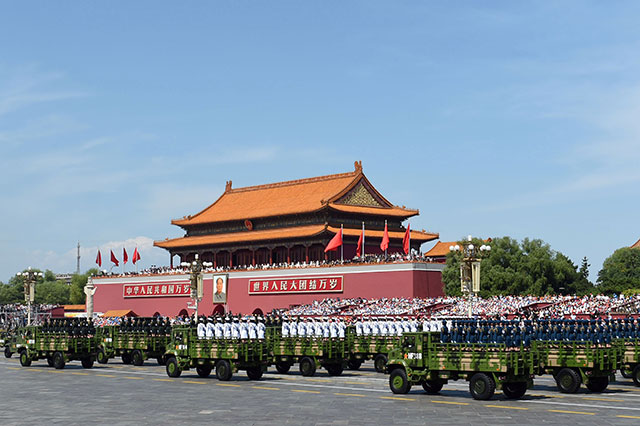
[Photo/xinhua]
'Victory never comes easily
Chen Nan
REPORTER
I was sitting in the western stands in front of the Tian'anmen Rostrum at about 6 am as dawn broke and the square was immersed in soft sunlight.
Hours later, the victory parade would start, marking the 70th anniversary of the end of World War II and victory in the Chinese People's War of Resistance against Japanese Aggression (1937-45).
As I stared at Tian'anmen Square, the largest urban square in the world, it seemed more spacious than in full daylight. And suddenly I experienced deja vu.
Back in 1999, a military parade was held on Oct 1 to mark the 50th anniversary of the founding of New China. As a Beijing native who was born in a traditional courtyard and who grew up in hutong, I was chosen as one of the members of a student team to parade across Chang'an Avenue and pass Tian'anmen Square. I was 15 then. After two months of parade training, we were very excited about that day.
Sixteen years later, as a journalist covering Thursday's grand national event, I felt not only excitement but also pride as a witness to the country's huge political and economic progress, its military might and the joy of its people.
Earlier, I interviewed members of the Chinese People's Liberation Army Chorus who performed at Thursday's parade. It was made up of 1,200 students selected from military schools around China who had rehearsed for hours under the sizzling afternoon sun. They were young, ambitious and eager to join in the ceremonies.
What impressed me most were the veteran soldiers who made contributions to the country during wartime. Most of them were over 90 years of age, but they virtually shined in their wartime uniforms. They made history.
At the end of the parade, thousands of colorful balloons and white doves flew above Tian'anmen Square. An elderly woman sitting in front me said: "Victory never comes easily."
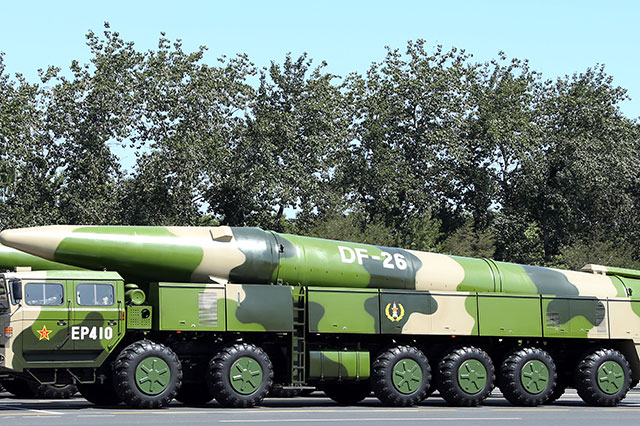
[Photo/Xinhua]
Powerful weapons protect peace
Zhao Lei
REPORTER
I believe that watching a seemingly endless stream of tanks, armored vehicles and missile launchers passing through Tian'anmen Square will be an unforgettable memory for every viewer of Thursday's magnificent parade.
Standing tens of meters away from the moving troop formations, I was taken by the honor of being a witness to the historic event and by pride in my motherland's greatness.
Such feelings were especially strong when the Type-99 tanks and ZBD-04A infantry fighting vehicles roared past me, because I know their combination gives the People's Liberation Army the most formidable strike force that no one else possesses across Asia. Knowing this is very meaningful to me as I am aware of the fact that China was easy to invade in the 1930s due to its weak ground force and lack of advanced arms.
Then came the strategic missiles-including the DF-16 short-range ballistic missile, DF-26 intermediate-range ballistic missile and the DF-31A intercontinental ballistic missile.
Their appearance indicates at least one thing-intercontinental ballistic missiles with a range of 15,000 km and the world's first anti-ship ballistic missile make it now virtually impossible to invade China from the sea.
The Chinese people cherish peace and hate war, but we also know that peace must be guarded by strong national defense, which heavily depends on an arsenal of powerful weapons.
I am convinced the display of China's advanced weapons didn't aim at showing the PLA's muscle or intimidating neighboring countries, as some foreign media claimed. Instead, it should act as a perfect reminder of our determination to safeguard the peace of China, Asia and the entire world.
However, for some foreign politicians who brazenly deny history or may hold malicious intentions toward China's sovereignty, territorial integrity and national interests, what they witnessed on Thursday will definitely force them to rethink whether they have enough guts and strength to challenge China.
I am not a believer in the saying that "might is right", but I do believe that if a nation has no might, it has no rights.
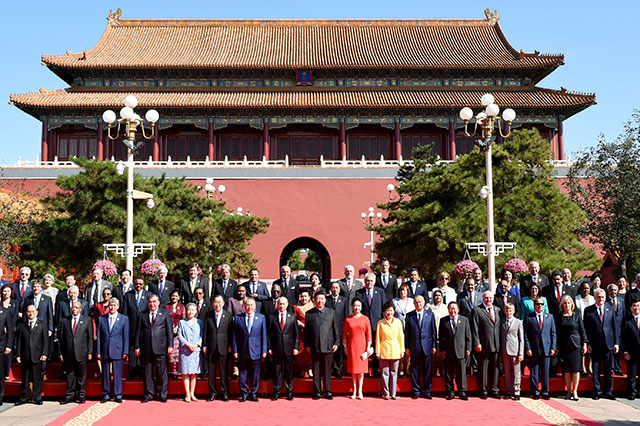
Duanmen Gate
History made at Duanmen Gate
Qin Jize
REPORTER
I was a little bit disappointed when I first arrived at my reporting spot: Duanmen Gate. While the architectural style is identical to Tian'anmen, and only 100 meters away, it was one of the few locations in the area where one couldn't view the military parade.
However, my downbeat mood didn't last long, as the thick walls, though totally obstructing my view, offered me something very different-the perfect place to witness the receiving of heads of foreign delegations and their spouses.
As a diplomatic news writer, I have reported welcoming ceremonies on numerous occasions, but Thursday was shrouded in history in more ways than one. It was the first time the Forbidden City opened its doors to foreign dignitaries.
In the shimmering sunlight of a glorious Beijing summer morning, the distinguished guests, including the presidents of Russia and the Republic of Korea, went in turn through the Duanmen Gate on a red carpet leading to a room in a wing of the complex decorated with Chinese paintings that evoked another era.
President Xi Jinping and his wife Peng Liyuan welcomed the guests at the entrance, shook hands, exchanged greetings and had photos taken with each of them.
After a brief gathering, they stood for a group photo. Duanmen served as a splendid backdrop ahead of the military parade.
The atmosphere, with reminders of the nation's cultural richness, made me realize that this was the highest honor China has offered to its guests who came to celebrate victory in the Chinese People's War of Resistance against Japanese Aggression (1937-45).
When I returned to the office, I checked a book and discovered that Duanmen, established in 1420, was one of the main gates of the royal palace in both the Ming and Qing dynasties. The tower at Duanmen once housed royal ceremonial articles.
It was officially opened to visitors in 1999, when the structure was restored, and became one of the best-preserved examples of ancient architecture in the Forbidden City. It soon became a major attraction for Chinese tourists, as the national flag guard is currently stationed on the north side of rooms on Duanmen's southern square. There is a daily changing of the guard and a flag-raising ceremony.
On a day that marked a major moment in history, the spot on which I was standing had its own historical resonance.
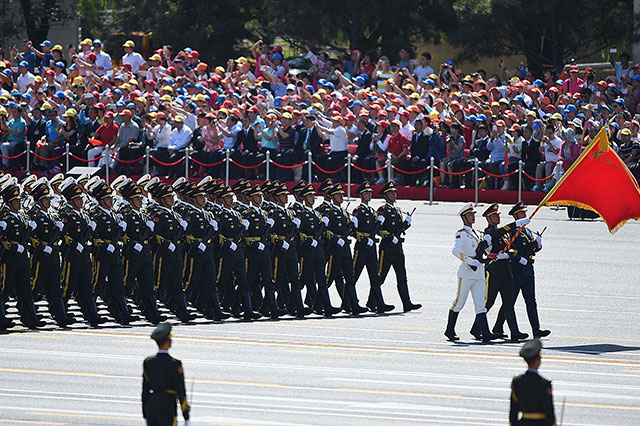
[Photo/Xinhua]
Photos capture moving moments
Wu Zhiyi
PHOTOGRAPHER
Although I have participated in a number of reporting assignments on major events in a career spanning nearly 40 years, Thursday was the first time I've ever been positioned on the viewing stand at the Tian'anmen Gate Tower, a well-known symbol of China.
It was a rare chance for a professional photographer to take pictures of a major event from this vantage point.
Seeing veteran soldiers who served in the war 70 years ago, as well as friends and guests from around the world, was also a novelty.
While I considered potential shots, many familiar faces came into view as the sun rose. Among them were veterans of the Red Army and figures dedicated to revolutionary missions.
Seventy years have passed since the victory in the Chinese People's War of Resistance against Japanese Aggression (1937-45). Many veterans are alive-including my father, who is more than 90 years old. Many have been troubled by health problems due to their age, and some were not able to witness the commemorations at the heart of the capital city.
For those capable of attending the event, the long wait at the viewing stand did not dampen their excitement. Most of them were in high spirits throughout the parade.
When they saw the spectacular presentations of the Chinese People's Liberation Army, a number of them couldn't hold back tears.
I did not weep with them, but I was deeply touched, partly because I was once a soldier. Several told me they were impressed by the increasing strength of the motherland and China's rising status around the world.
And we cannot forget that today's peace was anchored by their courage decades ago.
As foreign leaders stood to honor the parading soldiers, they sent a clear signal that championing peace is a joint mission that involves all the countries in the world.
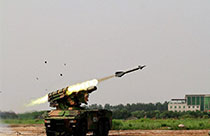 'Enemy planes' intercepted by Hongqi-7B air-defense missiles
'Enemy planes' intercepted by Hongqi-7B air-defense missiles Blind date with bikini girls in Nanjing
Blind date with bikini girls in Nanjing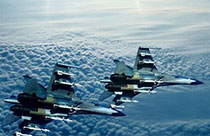 Amazing photos of Chinese fighter jets
Amazing photos of Chinese fighter jets Chinese soldiers participate in training for V-Day parade
Chinese soldiers participate in training for V-Day parade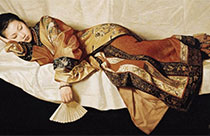 Painting: Lonely women in Forbidden City
Painting: Lonely women in Forbidden City China and Russia hold joint drill in Sea of Japan
China and Russia hold joint drill in Sea of Japan 'Goddess' in Taiwan McDonald's
'Goddess' in Taiwan McDonald's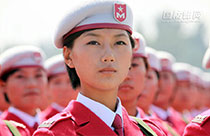 Female soldiers at military parades
Female soldiers at military parades Photos of campus belle doing splits go viral
Photos of campus belle doing splits go viral Dietary deceptions
Dietary deceptions China to optimize forces
China to optimize forces US Treasury sale a ‘normal’ option: experts
US Treasury sale a ‘normal’ option: experts Parade, military cut send explicit message
Parade, military cut send explicit messageDay|Week